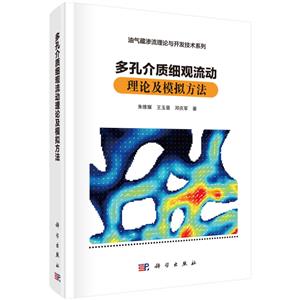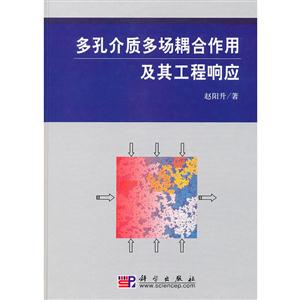
作者:(澳)郑东生 著
页数:289
出版社:上海交通大学出版社
出版日期:2013
ISBN:9787313090065
电子书格式:pdf/epub/txt
内容简介
《波浪和海床交互作用的多孔介质理论(英文版)》主要针对海洋岩土工程领域中核心问题,波浪-海床交互作用现象及其相关工程,进行一系列详尽的理论介绍及其相应的工程应用,主要内容包括相关研究最新进展及未来具挑战性的问题、波浪及海床相互作用问题的理论阐述以及海洋结构物附近的流固土耦合过程。作者针对核心理论作详尽阐述,并将其以适合工业界应用的形式展示,不仅为学术界科研人员提供理论基础,同时也为工程界提供有效的设计参考准则。
本书特色
《波浪和海床交互作用的多孔介质原理(英文版)(精)》由郑东生所著,Porous Models for Wave-seabed Interactions discusses the phenomenon of wave-seabed interactions, which is a vital issue for coastal and geotechnical engineers involved in the design of foundations for marine structures such as pipelines, breakwaters, platforms, etc. The most important sections of this book will be the fully detailed theoretical models of wave-seabed inter-action problem, which are particularly useful for postgraduate students and junior researchers entering the discipline of marine geotechnics and off shore engineering. This book also converts the research outcomes of theo-retical studies to engineering applications that will provide front-line engi-neers with practical and effective tools in the assessment of seabed instabil-ity in engineering design.
目录
1 introduction
1.1 introduction
1.2 hot research topics
1.3 outline of the book
references
2 recentadvances
2.1 introduction
2.2 waves propagat.ing over a porous seabed: theoreticalmodels.(transient mechanism)
2.2.1 un-coupled models (or drained models)
2.2.2 biot’s consolidation model(quasi-static model)
2.2.3 u-p approximation
2.2.4 dynamicmodels
2.2.5 poro-elastoplasticmodels
2.3 waves propagating over a porous seabed: theoreticalmodel(residual mechanism)
2.4 waves propagating over a porous seabed: physical modeling
2.4.1 fieldmeasurements
2.4.2 laboratoryexperiments
2.5 waves propagating over a porous seabed: wave damping andseepage fluxi a porous seabed
2.5.1 wave damping in a xin sediments
2.5.2 wave-driven seepage fluxir
2.6 wave-induced seabedlnstability
2.6.1 shearfailure
2.6.2 liquefaction
references
3 wave-induced soil response in anlsotropic seabed
3.1 introduction
3.2 a short-crested wave system
3.3 boundary value problem
3.3.1 governing equations
3.3.2 boundary conditions
3.4 generai solutions
3.4.1 basic theoretical framework
3.4.2 soil responsein a seabed of lnfinite thickness
3.4.3 soil response in a porous seabed of finite thickness
3.4.4 soil response in a layered seabed
3.4.5 limitingtwo-dimensionaiconditions
3.4.6 a special case: fully saturated isotropic seabed of lnfinitethickness
3.5 verification
3.5.1 comparison with two-dimensional experimental data
3.5.2 comparison with two-dimensionalanalyticaisolutions
3.5.3 comparison with numerical model [18, 40,411
3.6 results and discussion
3.6.1 effect ofwave characteristics
3.6.2 effect of soil characteristics
3.6.3 effect of a combined obliquity-permeability parameter
3.6.4 effect of a top layer
3.7 summary
3.8 list ofcoefficients bi and ci
references
4 wave-induced seabedlnstability
4.1 introduction
4.2 shear failure
4.2.1 principal stresses
4.2.2 mohr-coulomb’s criterion
4.3 soil liquefaction
4.3.1 excess pore pressure
4.3.2 criteria of liquefaction
4.3.3 seepageforce
4.4 wave-induced seabedlnstability
4.4.1 effect of wave characteristics
4.4.2 effect of soil characteristics
4.4.3 effect of combined obliquity-permeability parameter
4.4.4 temporalvariationinwave-inducedliquefaction
4.5 seabed protection
4.5.1 effects of a top layer
4.5.2 methodology of seabedp rotection
4.6 summary
references
……
5 wave-induced seabed response in non-homogeneous anisotropicseabed
6 dynanuc analysis for wave-seabed interaction
7 wave propagation over coulomb-damped seabed
8 random wave-induced seabed response
9 wave-induced pore pressure accumulation in marine sediments
10 wave-induced progressive liquefaction in a porous seabed
index















